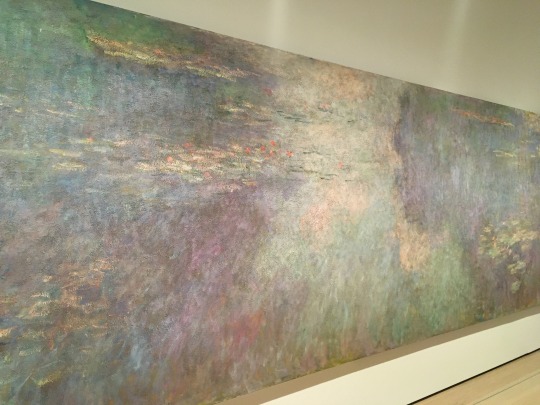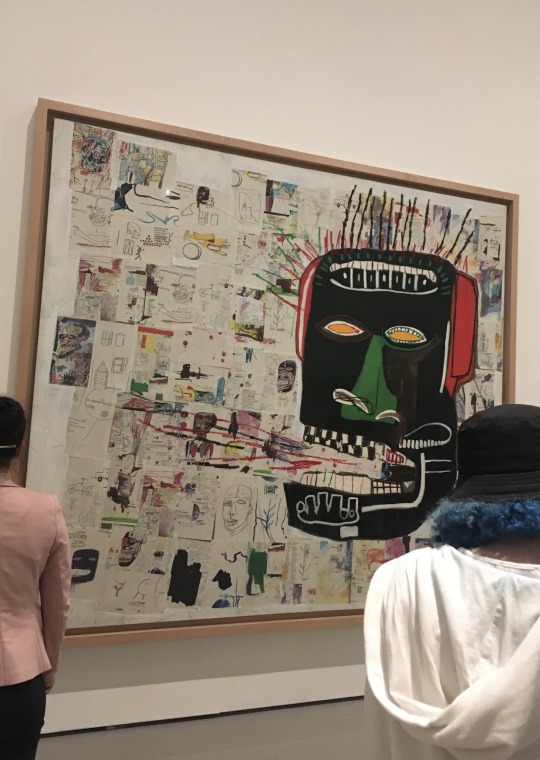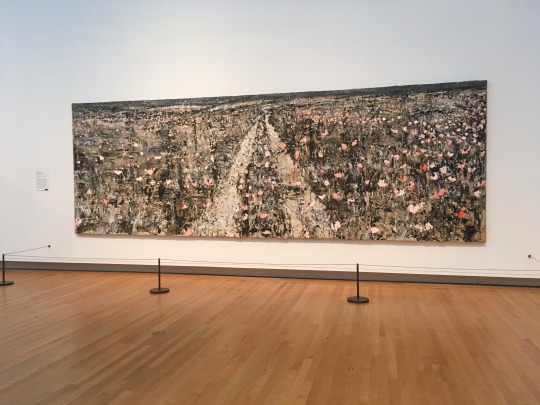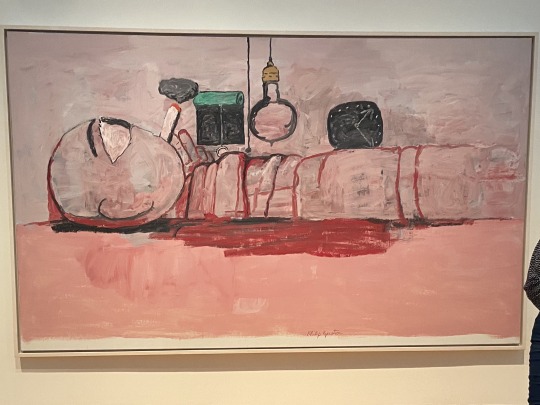Photo

Album Review - ‘真っ黒’ or Makkuro (Black) by Tricot
Tricot is a Japanese math-rock band formed in 2010. This release a decade later is their 4th full-length project to date. Singles off the album dropped late last year and the album itself this past March with twelve tracks. I was interested in investigating this project because I had heard the group’s single “Potage” last year. Additionally I was familiar with math-rock’s parent genre emo from my time listening to bands like Brand New, American Football, and At the Drive-In. This album is in Japanese, and translation of the album is not currently available because of its newness and obscurity. Therefore, I’ll be rating this album like an instrumental one.
Math rock traces it’s lineage back to punk, an interesting fact given the pop core of this album. This album seems to be swinging the genre of math rock back into popular rock sounds, hopefully refreshing the genre. Songs can be asymmetrical, multilayered, and multisectioned. Syncopation is its bread and butter. Rather than focus on progressive chords or melodies, Tricot is more focused on subverting expectations of song structure and rhythm. Often choruses form more of a nonsequitur from the verse. What starts as a bridge may take half the song. This focus on form is not to say there aren’t interesting chords or melodies. But these aspects are far more clearly borrowed from places like emo, alternative, and djent/nu-metal. Especially the focus on bass and mixed in dissonance similar to these styles.
The tracklisting pairs darker more metal-influenced songs and poppier brighter tracks. Most of the album is rather upbeat with speeding guitar chords. Tracks like “Himitsu” feature djentier bass most familiar in modern metal. It’s dark and chugging verses are countered by the bright pop vocals of the chorus. “Naka” meanwhile embraces conventional emo chords while adding stumbling muted guitar lines. “One Season” is easily my favorite track for its spiraling array of notes in the chorus.
Overall, while this album synthesized aspects of different styles, it borrows extremely conventional pieces from very similar genres. This album also lacks variety. It is firmly a rock album with little in the way differentiating it through genre. Additionally, the tracklisting isn’t varied, and many songs sound similar. It is mostly following a melodic tradition in emo that diverges very little. The rhythm is the main element giving a hint to any experimentation.
6.5/10
2 notes
·
View notes
Photo





Museum Visit - NYC’s Met and MoMA
This past week, my sister and I traveled up to NYC for a few days. During our trip I experienced a lot of firsts: getting ripped off at a deli, breaking up a fight by falling down subway stairs, and eating the best pizza of my life--by all means a typical New York trip. But can you really say you’ve seen the city if you don’t visit either of the major art museums? Of course not. So we ventured uptown to see them.
The Met
The Metropolitan Museum of Art spans two floors and four city blocks, with a focus on antiquity. The bulk of the collection comes not in the form of paintings or photos but artifacts including sculptures and jewelry. The nature of the collection is that there are thousands upon thousands of items on exhibit, ranging from very small to very large. You can walk through the Temple of Dendur or strain your eyes on byzantine rings. It’s easy to get overloaded. I was already feeling the fatigue when I tried to orient myself (I didn’t). This, combined with my tendency towards headaches, meant I only got a brief viewing before calling it quits. So I planned to focus on the modern art collection.
My Favorite Pieces:
Anselm Kiefer. Bohemia Lies by the Sea (1996)
pictured bottom left
In this painting, a pink and grey poppy field is bisected by a dirt road. At first, passing by it at the same distance as the other paintings, it looked like a Pollock. But as I studied the surface I realized my mistake. The paint wasn’t purely splattered it was built up through thick cracked layers with chunks of burlap between it and the canvas. Stepping back several feet I could see the picture. The dirt greys were perfectly mundane in contrast to the charming poppy flowers. I loved the illegibility of it -- that it was complete manic nonsense up close but was so quietly commanding far away.
Philip Guston. Stationary Figure (1973)
pictured bottom right
It was interesting to read that Guston’s early work was very different from this piece. Those works were considered to be very “serious” paintings. But when he took up this new style he was severely criticized. I love the pop art aspect of it. I really respect when artists abandon the pretentious in favor of relating to the wider culture outside art. I think Guston does this fantastically in his comic style that captures a relatable sense of anxiety.
MoMA
While sitting at a much humbler two-thirds of a block, the Museum of Modern Art instead reaches six total floors of gallery space. My legs certainly felt the burn while trekking up and down in search of a bathroom. We went on a late Friday night when the museum hosts its free night. In exchange for saving $20 we battled the crowds to look at some of modern art’s most iconic images.
My Favorite Pieces:
Claude Monet. Water Lilies. (1914-26)
pictured second
Nothing quite compares to seeing Monet’s waterlilies in person. This particular piece stands out from other lilies paintings as being the most indulgent. While all his works evoke the mythical beauty of nature, this piece crafts one. It’s an imagined nature, one that borrows colors from across the spectrum. It’s lilies at their extreme--light and ethereal.
Jean-Michel Basquiat. Glenn. (1984) and Keith Haring. Untitled. (1982)
pictured third and first, respectively
In Glenn, Basquiat portrays a loud face over the right side of what is a collection of sketches on different papers. In Untitled, Haring crowds the wood boards with some of his iconic figures. Haring and Basquiat share a lot through their maximalist style. The frenetic energy of both work well to convey mania and chaos. Both embraced dynamic composition. They both also explored and represented the minority groups they inhabited. I enjoyed seeing their work for the time that can be spent, near endlessly picking through the details. Their work tackles so much at once that deciphering their pieces is a much richer experience to me.
Conclusion
MoMA definitely topped the Met for me, but that’s because I enjoy modern art most. MoMA’s layout design was also a lot more intuitive and navigable. The icing on the cake was of course being able to go for free, though I would consider paying in the future if only to avoid the crowds.
When looking at art you can see it through two perspectives - the universal truths that art seeks the convey but also the small moments of history where an artist articulates them. Over the course of a few hours at both I had the privilege of being face to face with some of the world’s most famous and impactful art. And still its only a fraction.
0 notes
Text
What is My Culture?
...It’s hard to say. A lot of what people think of when they hear culture is one’s family. So I’ll start with that.
I was born in Jacksonville, Florida, almost 20 years ago. I have a mom and a dad and a sister from each. By ever standard we were the typical white southern family: church on Sundays, sports games on weekend afternoons, and perpetually eating a casserole of some sort. We went on vacation 3 hours away from where we lived. We lived in a trailer, and then a three bedroom house with a pool - the dream of the American middle class as my parents saw it.
I grew up in the kind of big family where you can never know how you’re related to everyone at the Thanksgiving table. The human mind cannot handle that many names and titles. It’s the size of family I often hear people say they wish they had. But they’ve always felt like strangers. With so many people it’s easy to get looked over. So I’ve never liked it or related to them much. As for my immediate family, I’m pretty close with all of them. My parents grew up in the age of spankings and respect with a capital R. But I was never afraid of my parents, and was raised to be open and casual with them. My sisters and I are all 10 and 20 years apart. This means we all basically grew up as only children which was, in a way, a blessing - we’ve never been rivals.
My parents joke about me not being their kid a lot and it makes sense. It would seem the universe picked me out of a line-up of least likely candidates. I’m introverted, agnostic, and worst of all - vegetarian. Culture how I experience and participate in it now is a lot less narrow than it was growing up. I’ve played guitar for seven years and I listen to any kind of music I can get ahold of (regardless of language). I eat Chinese, Greek, Mexican, Indian, anything that taste good (and lacks meat). I write computer programs that I hope one day will turn into software. I talk to my friends half in memes and half in references. I feel a lot closer to the culture of my generation than that of my family. With communication more accessible than ever, it seems culture is increasingly less prescribed and more flexible.
It seems all I’ve gained culturally from growing up has been familiarity and bias. I haven’t been to church in five years, but I still remember the Lord’s Prayer. I never watch Hockey but can still glance over at a game and know whats happening. I listen to jazz and metal and classical and R&B, but rock will always sound like home.
0 notes